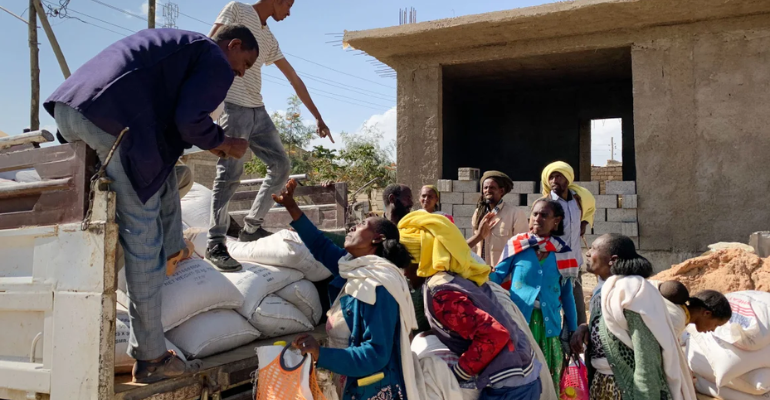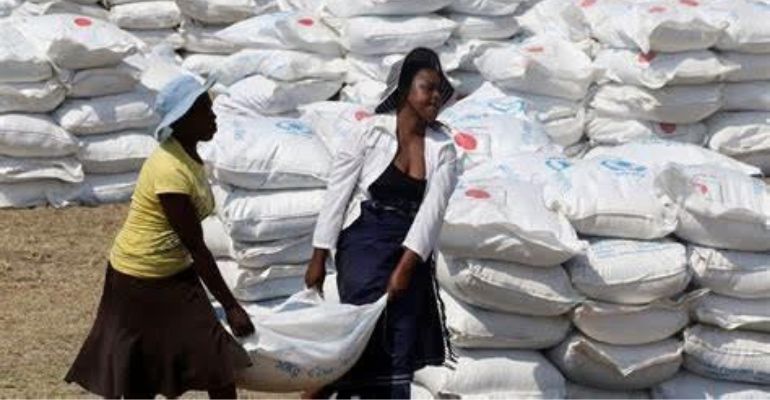Ethiopia’s most recent report on poverty and equity from the World Bank showed discouraging results: the poverty headcount is expected to rise to 43 percent by 2025, from the 33 percent recorded in 2016 (using a $3.00 per day (2021 PPP) measure). Once regarded as one of the fastest-developing economies in Africa, Ethiopia’s fall from grace showcases not just the effects of conflict and inflation, but also the impact of a development strategy that has long neglected private-sector inclusion, economic freedom, and the role of market systems.
Policy Constraints, Undoing a Decade of Progress
Due to Ethiopia’s ‘state-led’ approach to the economy, it achieved impressive figures in GDP growth. However, this growth failed to generate economic dynamism in the private sector, and it collapsed when the government stopped spending. The structural weakness of the economy and its lack of responsive economic markets became evident when the Tigray war, severe droughts, and COVID-19 struck alongside inflation (World Bank, 2025). The 2025 World Bank report on poverty and equity has shown that urban inflation is hurting households, and for about 75% of the population, food prices were higher due to poor market integration, restrictive land, and labor laws (Addis Standard, 2025; World Bank, 2025). These weak economic policies typically lead to poor economic performance and the lack of freedom and competition that economies with stronger property rights and market access possess.
Poverty in Ethiopia is not just widespread; it is also largely rural and embedded in the country’s economic system. As of 2021, over 86% of rural adults had not completed primary school, with about 50% of rural households having an educationally challenged child. These figures highlight how millions of people are trapped outside the reach of opportunity. The lands in Ethiopia have been owned by the government for so long, and the laws do not allow private ownership of land. Similarly, the government has controlled key sectors of the economy, including finance, making it difficult for ordinary citizens to start a business or build wealth. This means that these lands cannot be used by farmers as collateral to access loans or to invest in diverse farming methods (World Bank, 2025). Without secure property rights, the fear of losing access to land discourages people from making long-term improvements to their farms. Bureaucracy is also a burden for small businesses, with complicated licensing systems, high registration costs, and limited access to credit.
Controlled Reforms, Debt, and Dependence
With these challenges being recognized, changes such as the gradual removal of fuel subsidies, trade and tax reforms, and exchange rates determined by the market were implemented. Safety net payments were increased, fertilizer subsidies were maintained, and public sector salaries increased to support the reforms. The World Bank recently provided 1 billion dollars to support these efforts under the Development Policy Operation (World Bank, 2025). Similarly, the International Monetary Fund acknowledged the move towards reducing the Central Bank’s deficit. Though positive, these steps still lack liberalism as the economy is heavily state-regulated.
Due to years of borrowing money for industrialization and infrastructure projects by the state, Ethiopia’s external debt is considered to have reached an unsustainable level (World Bank & IMF, 2025). The country’s structural weaknesses, driven by excessive government spending and insufficient private investment, have led to a short-term liquidity problem. Even as the government negotiates financial stability with international creditors, debt forgiveness alone won’t be enough to rebuild trust. Recurrent state interventions will not be sufficient to achieve sustainable growth; instead, private enterprise and domestic investment must be mobilized.
A Call for a Freer Future
Ethiopia serves as a lesson to the rest of Africa: central planning makes growth very vulnerable. Economically, temporary relief may be gained through central planning and subsidies. Yet, long-term gain can only be achieved through real growth. Real growth means policies that expand market participation, protect property rights, and enable every entrepreneur to create value. Because of its youthful demography and favorable location, Ethiopia has the potential to grow into a center of trade and innovation, but only if progress is allowed to be made on an individual, not on a state level.
To promote prosperity, Ethiopia also has to expand the scope of its reforms, unlock sectors of the economy, and remove obstacles to enterprise. If it does not, stagnation, dependency, and debt may once again become its reality. Never has it been heard that a country embraced free markets and didn’t flourish. Ethiopia is now at a critical turning point in its economic development: it can continue its present policies based on control and systematic crisis, or it can embark on a policy of openness and allow enterprise to become the core of its economic growth and development.
References
Addis Standard. (2025, October 13). World Bank says Ethiopia’s poverty rate expected to climb to 43% in 2025, reversing years of progress. Retrieved from https://addisstandard.com/world-bank-ethiopias-poverty-rate-expected-to-climb-to-43-in-2025-reversing-years-of-progress/
Ethiopian Law Brief. (2024). Analysis of Ethiopia’s draft legislation on foreign ownership of immovable property. https://ethiopianlaw.com/legal-brief-analysis-of-ethiopias-draft-legislation-on-foreign-ownership-of-immovable-property/
International Monetary Fund (IMF). (2025, May 28). Ethiopia’s Central Bank leading transformative reform. https://www.imf.org/en/News/Articles/2025/05/28/cf-ethiopias-central-bank-leading-transformative-reform
Reuters. (2023, December 27). Ethiopia misses $33 million Eurobond coupon payment, enters default. https://www.reuters.com/world/africa/fitch-cuts-ethiopias-foreign-currency-rating-after-downgrade-2023-12-27/
World Bank & International Monetary Fund. (2025). Joint Debt Sustainability Analysis: Federal Democratic Republic of Ethiopia. Washington, DC. http://documents.worldbank.org/curated/en/099091725182560879
World Bank. (2025). Poverty & Equity Brief: Ethiopia [PDF]. https://documents1.worldbank.org/curated/en/099559004212518954/pdf/IDU-74184097-0606-4f26-a1b5-135f87d3c88c.pdf











